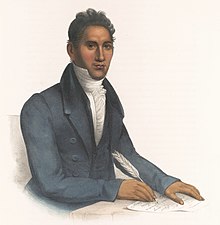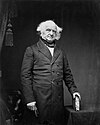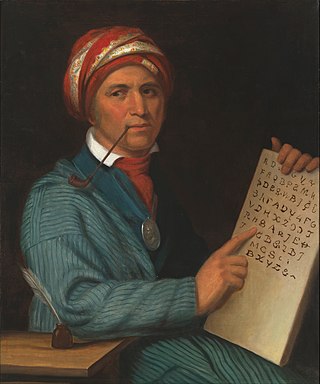
The Cherokee People are one of the Indigenous peoples of the Southeastern Woodlands of the United States. Prior to the 18th century, they were concentrated in their homelands, in towns along river valleys of what is now southwestern North Carolina, southeastern Tennessee, southwestern Virginia, edges of western South Carolina, northern Georgia and northeastern Alabama consisting of around 40,000 square miles

John Ross was the Principal Chief of the Cherokee Nation from 1828 to 1866; he served longer in that position than any other person. Described as the Moses of his people, Ross influenced the nation through such tumultuous events as the relocation to Indian Territory and the American Civil War.

Elias Boudinot, also known as Buck Watie) was a writer, newspaper editor, and leader of the Cherokee Nation. He was a member of a prominent family, and was born and grew up in Cherokee territory, now part of present-day Georgia. Born to parents of mixed Cherokee and European ancestry and educated at the Foreign Mission School in Connecticut, he became one of several leaders who believed that acculturation was critical to Cherokee survival. He was influential in the period of removal to Indian Territory.
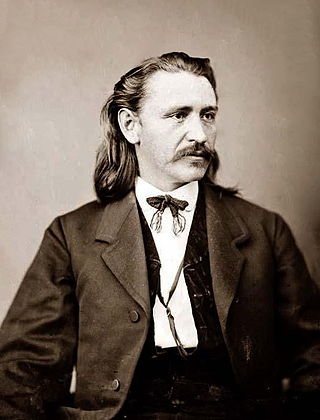
Elias Cornelius Boudinot was an American politician, lawyer, newspaper editor, and co-founder of the Arkansan who served as the delegate to the Confederate States House of Representatives representing the Cherokee Nation. Prior to this he served as an officer of the Confederate States Army in the Trans-Mississippi Theater of the American Civil War. He was the first Native American lawyer permitted to practice before the U.S. Supreme Court.

Brigadier-General Stand Watie, also known as Standhope Uwatie and Isaac S. Watie, was a Cherokee politician who served as the second principal chief of the Cherokee Nation from 1862 to 1866. The Cherokee Nation allied with the Confederate States during the American Civil War, and he was subsequently the only Native American Confederate general officer. Watie commanded Indian forces in the Trans-Mississippi Theater, made up mostly of Cherokee, Muskogee, and Seminole. He was the last Confederate States Army general to surrender.

Major Ridge, The Ridge was a Cherokee leader, a member of the tribal council, and a lawmaker. As a warrior, he fought in the Cherokee–American wars against American frontiersmen. Later, Major Ridge led the Cherokee in alliances with General Andrew Jackson and the United States in the Creek and Seminole wars of the early 19th century.

New Echota was the capital of the Cherokee Nation in the Southeastern United States from 1825 until their forced removal in the late 1830s. New Echota is located in present-day Gordon County, in northwest Georgia, north of Calhoun. It is south of Resaca, next to present day New Town, known to the Cherokee as Ꭴꮝꮤꮎꮅ, Ustanali. The site has been preserved as a state park and a historic site. It was designated in 1973 as a National Historic Landmark District.

John Ridge, born Skah-tle-loh-skee, was from a prominent family of the Cherokee Nation that had a lot of status, then located in present-day Georgia. He went to Cornwall, Connecticut, to study at the Foreign Mission School And was very educated. He met Sarah Bird Northup, of a New England Yankee family, and they married in 1824. Soon after their return to New Echota in 1825, Ridge was chosen for the Cherokee National Council and became a leader in the tribe.
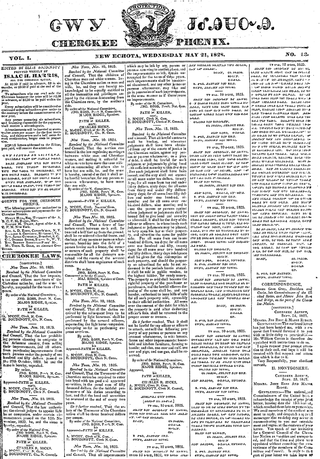
The Cherokee Phoenix is the first newspaper published by Native Americans in the United States and the first published in a Native American language. The first issue was published in English and Cherokee on February 21, 1828, in New Echota, capital of the Cherokee Nation. The paper continued until 1834. The Cherokee Phoenix was revived in the 20th century, and today it publishes both print and Internet versions.

John Martin Thompson was a lumberman, Native American tribal and civic leader, born in the old Cherokee Nation prior to removal in what is now Bartow County, Georgia, USA. He was the son of Benjamin Franklin Thompson, a South Carolinian of Scot-Irish descent, and Annie Martin, a mix blood Cherokee. She was the daughter of Judge John Martin, the first Chief Justice of the Cherokee Nation and Nellie McDaniel.
Doublehead (1744–1807) or Incalatanga, was one of the most feared warriors of the Cherokee during the Cherokee–American wars. Following the peace treaty at the Tellico Blockhouse in 1794, he served as one of the leaders of the Chickamauga Cherokee, and he was chosen as the leader of Chickamauga in 1802.
John Looney was a Cherokee chief. As a young man, he served in the United States Army under Andrew Jackson. He later became chief of the Western Cherokee, in which capacity he negotiated with the US government and dealt with conflicts with the rival Eastern Cherokee.

Cherokee history is the written and oral lore, traditions, and historical record maintained by the living Cherokee people and their ancestors. In the 21st century, leaders of the Cherokee people define themselves as those persons enrolled in one of the three federally recognized Cherokee tribes: The Eastern Band of Cherokee Indians, The Cherokee Nation, and The United Keetoowah Band of Cherokee Indians.
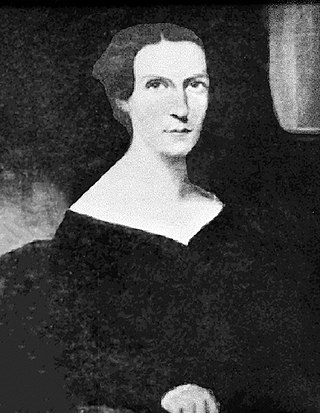
Harriet Ruggles Gold Boudinot (1805–1836) was notable as the wife of Cherokee Elias Boudinot, who became a leader in the Cherokee Nation and editor of its newspaper The Cherokee Phoenix. Harriett was the youngest of fourteen children of Colonel Benjamin and Eleanor Gold of Cornwall, Connecticut; they were a prominent Congregationalist family of English descent.

David Vann was a sub-chief of the Cherokee people. He was a skilled negotiator with the United States government on behalf of the Cherokee and Creek peoples. Vann was elected treasurer of the Cherokee Nation in 1839, 1843, 1847 and 1851.

The Cherokee Nation was a legal, autonomous, tribal government in North America recognized from 1794 to 1907. It was often referred to simply as "The Nation" by its inhabitants. The government was effectively disbanded in 1907, after its land rights had been extinguished, prior to the admission of Oklahoma as a state. During the late 20th century, the Cherokee people reorganized, instituting a government with sovereign jurisdiction known as the Cherokee Nation. On July 9, 2020, the United States Supreme Court ruled that the Muscogee (Creek) Nation had never been disestablished in the years before allotment and Oklahoma Statehood.
The Chickamauga Cherokee were a Native American group that separated from the greater body of the Cherokee during the American Revolutionary War and up to the early 1800s.
The Cherokee removal, part of the Indian removal, refers to the removal of an estimated 15,500 Cherokees and 1,500 African-American slaves from the U.S. states of Georgia, North Carolina, Tennessee and Alabama to the West according to the terms of the 1835 Treaty of New Echota. It is estimated that 3,500 Cherokees and African-American slaves died en route.
Sovereignty is a play written by American lawyer and playwright Mary Kathryn Nagle. The play revolves around Cherokee lawyer Sarah Ridge Polson's battle to reinstate the Cherokee Nation's sovereignty and jurisdiction. She also must face the ghosts of her ancestors and the struggles they faced when signing a decisive treaty that led to the removal of the Nation from their land.

